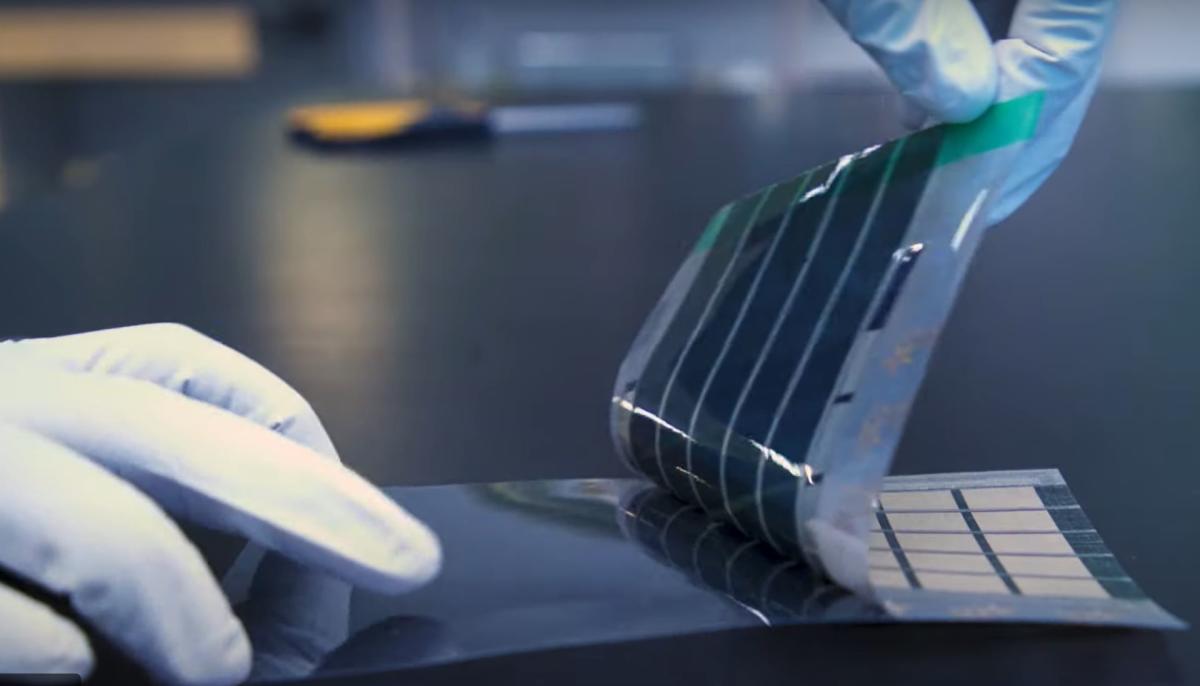- cross-posted to:
- [email protected]
- cross-posted to:
- [email protected]
Scientists develop mega-thin solar cells that could be shockingly easy to produce: ‘As rapid as printing a newspaper’::These cells could be laminated onto various kinds of surfaces, such as the sails of a boat to provide power while at sea.



Yes, correct me if I am wrong buy is that not the case?
No, definitely not. There’s no such lifetime limit.
Why not? I have not looked at this in forever so im probably wrong but I thought that these pn pairs end up creating some band gap. Over time that band gap widens until the energy from the sunlight just isnt strong enough to move through the system. In the end, it has a finite qty of holes so that limit depends on the qty of doped materials.
Again i dont remember well so 🤷
You’re a bit jumbled up here.
There are P N junctions where the magic happens. The P side conducts by moving vacant electron “slots” through the structure, we call these holes as in electron holes. There isn’t a lack of electrons or anything, both N and P are charge neutral, instead: Where in a metal if you push an electron into it in a circuit it bumps another one over a bit and so on in a P type you pull an electron off one end, the “hole” moves taking an electron from deeper in to fill where it was until at the end it pulls another in.
As you can see the number of holes is constant under normal circumstances. We pay attention to them for reasons that’ll become clear.
Now since N types want to volunteer electrons and P types have little electron holes ready, and these are negatively and positively charged (remember overall the material is neutral though) if we put them together then in a very narrow region some holes will accept electrons and fill up. As this happens ion cores (nuclei of the atoms making up the material missing an electron) are exposed in the N type making a small positive region, while the extra electrons in the P type make a small negative region. This balances the hole-electron attraction exactly and we have a stable charge depleted region.
Following? let’s talk about lightning for a moment.
you know how everything becomes a conductor if you try hard enough? think lightning jumping down through air, a tree, and some literal earth. Well lighting ionises (pulls electrons off making a kind of gas made of charged particles) stuff mostly but there’s a special sort of state most metals and similar can get to (indeed most metals are in this state at room temperature) where they’re sort of lightly ionised. Instead of the electron going away it sort of becomes promiscuous and is happy to share its time with nearby atoms.
Electrons in this state have certain energy levels associated with them, we call this band of states the conduction band. To get to that energy state you need to go from the valence band across a "band gap " to be promoted to slutty electron.
OK so these bound hole-electron pairs moved from the conduction band to the valence band when they settled down with each other. They can’t conduct anymore. But if a photon hits them just right they trial an open marriage and separate into the conduction band. The electron is now more attracted to the positively charged region back from whence it came and visa versa for the hole. Once they get bumped over they have to go the long way round the circuit to find each other again and that’s how we get energy.
Thank you for the eli5 refresher on how PN junctions and band gap works.
All I was saying was if there is some N-type material with only some finite number of excess electrons and some P-type with finite number of holes, there is a specific energy level that this semiconductor requires for valence band conduction. The electrons are not being replaced in the circuit so the N-type is slowly degrading. In a normal scenario, these materials would take forever to deplete and so it is usually treated like an infinite well. In reality, a cell will have only a finite potential energy and a discrete so in effect widens the band gap until the cell is no longer functional.
On the contrary, i know thin film solar cells exist. Way back in college i remember making organic dye sensitized solar cells and they were complete garbage. I might be associating all thin cells the same way but yeah. Was a bit of time ago for me and im going off my shitty memory
The electrons are being replaced, otherwise the system would become charged over time. They go the long way round the P side of the junction and bond with a hole again in the depleted region.
Solar cells do deteriorate over time but it’s not due to use, or not directly. The structure of various parts gets damaged through lattice migration due to heat/thermal cycling, UV radiation and higher can cause excitation to reactive states that damage crap, dopants can migrate around over time (like how carbon can leech from steel) and reduce the conductive efficiency etc.
I think this might be what you’re confused by? there are a finite number of available charge carriers in the depletion region and damage to the region uses them up, but it’s not because they’re used up it’s because of structural and chemical changes caused by damage that occurs due to the environment.
Are they being replaced? I dont remember these circuits being closed loop. I also dont remember if photons do anything other than create a wave excitation to move electrons… where is the replenishment coming from?
I understand phonons deteriorate lattice structures. I dont know if that is a seperate issue though.
So on the arse ends of the junction are little wires (one transparent). If you leave the panel in an open circuit the carriers will separate till the charge build up overcomes the depletion zone field and no more charge separation happens during excitation.
In this configuration the cell is essentially a capacitor.
If you close the circuit the P side of the electric field will propagate through the circuit and the load, pushing charge carriers through the load, out the other end, and into the P side of the junction where they combine with the separated holes.
Electrons have to come from somewhere. They arent coming from sunlight. Im not understanding how even if its closed loop it will carry charge back so there is no defecit in charge. This is why i keep saying it makes sense as long as there is an assumption of infinite electrons. If you take that away, where does the potential come from…